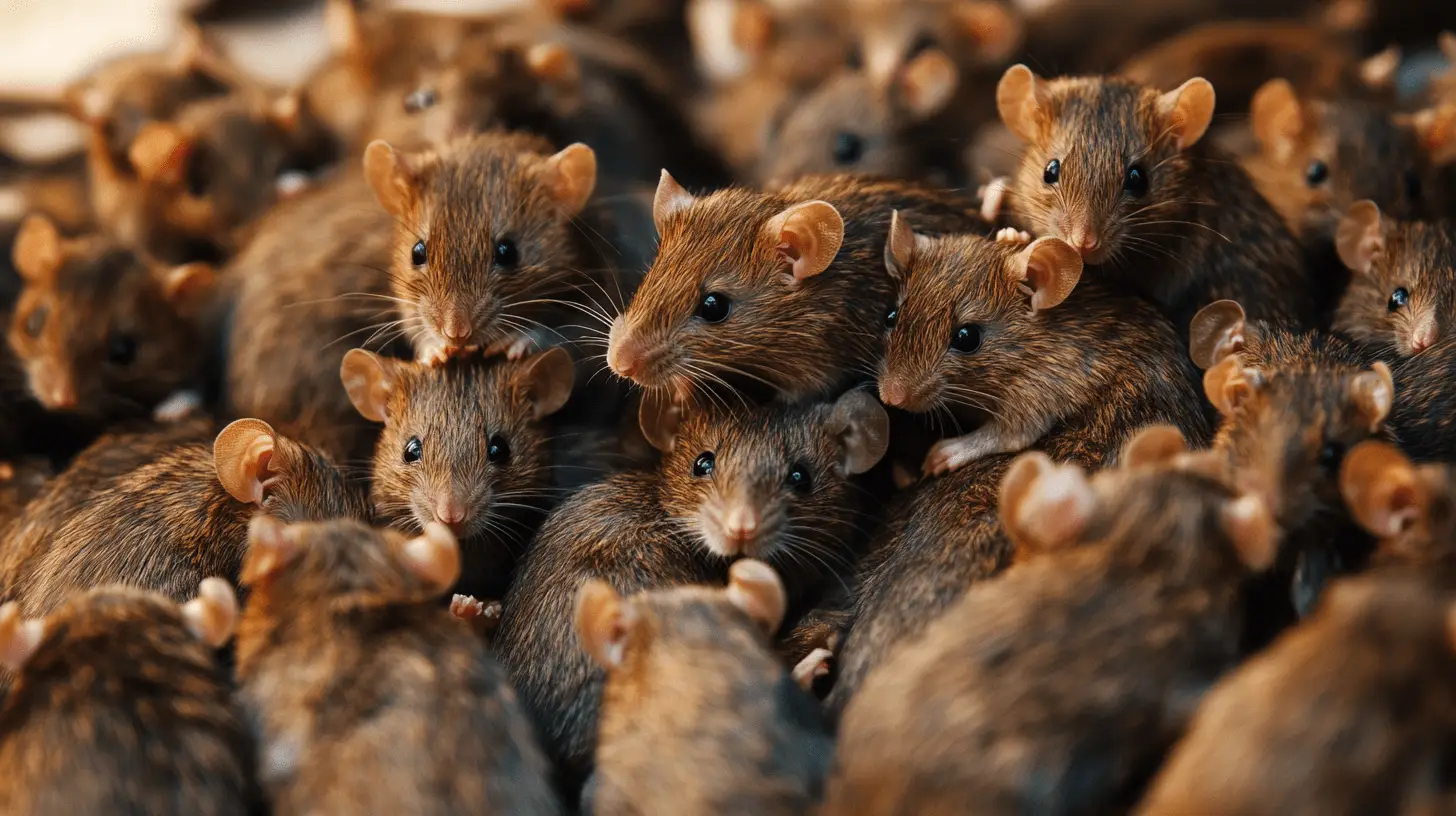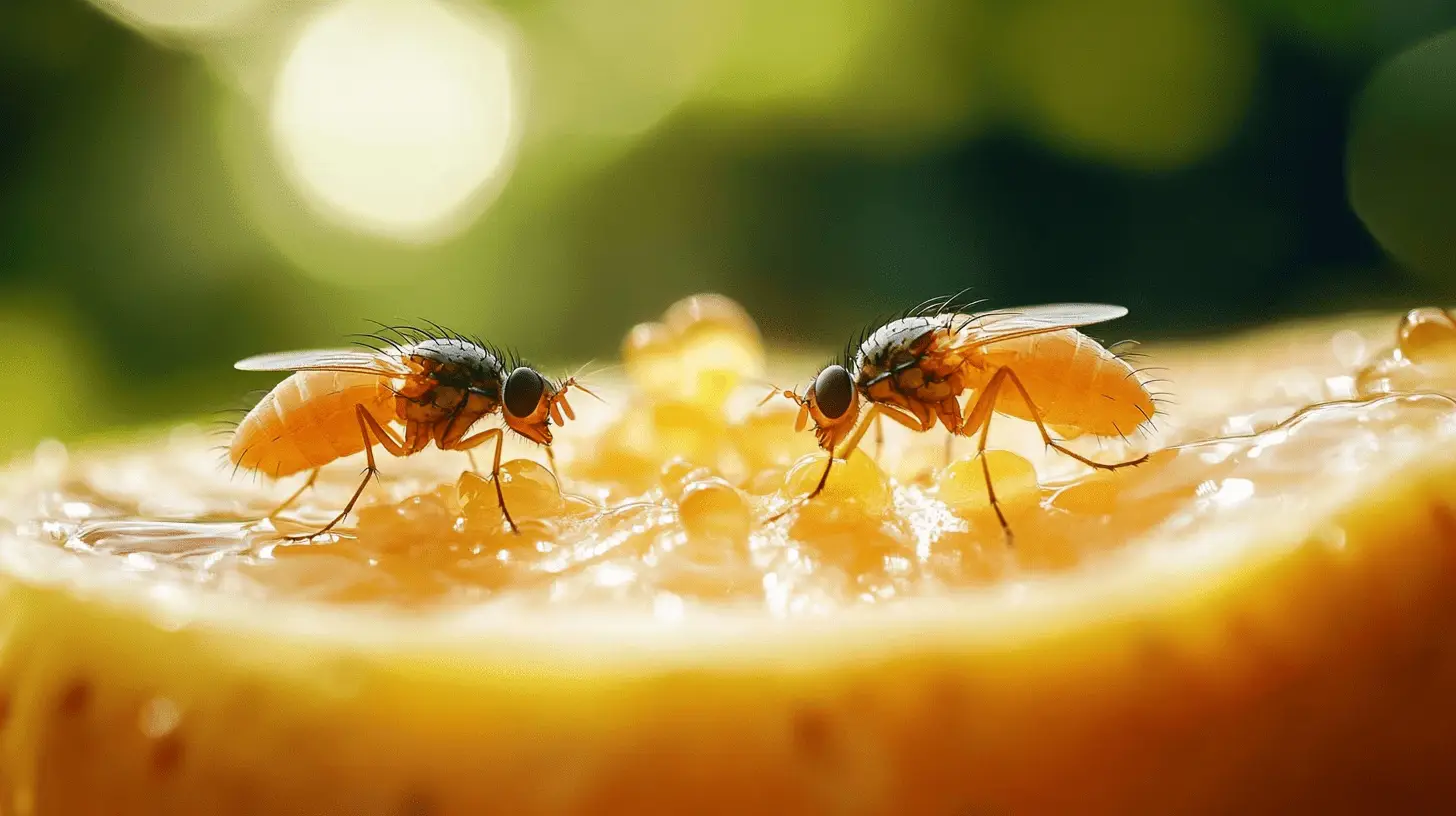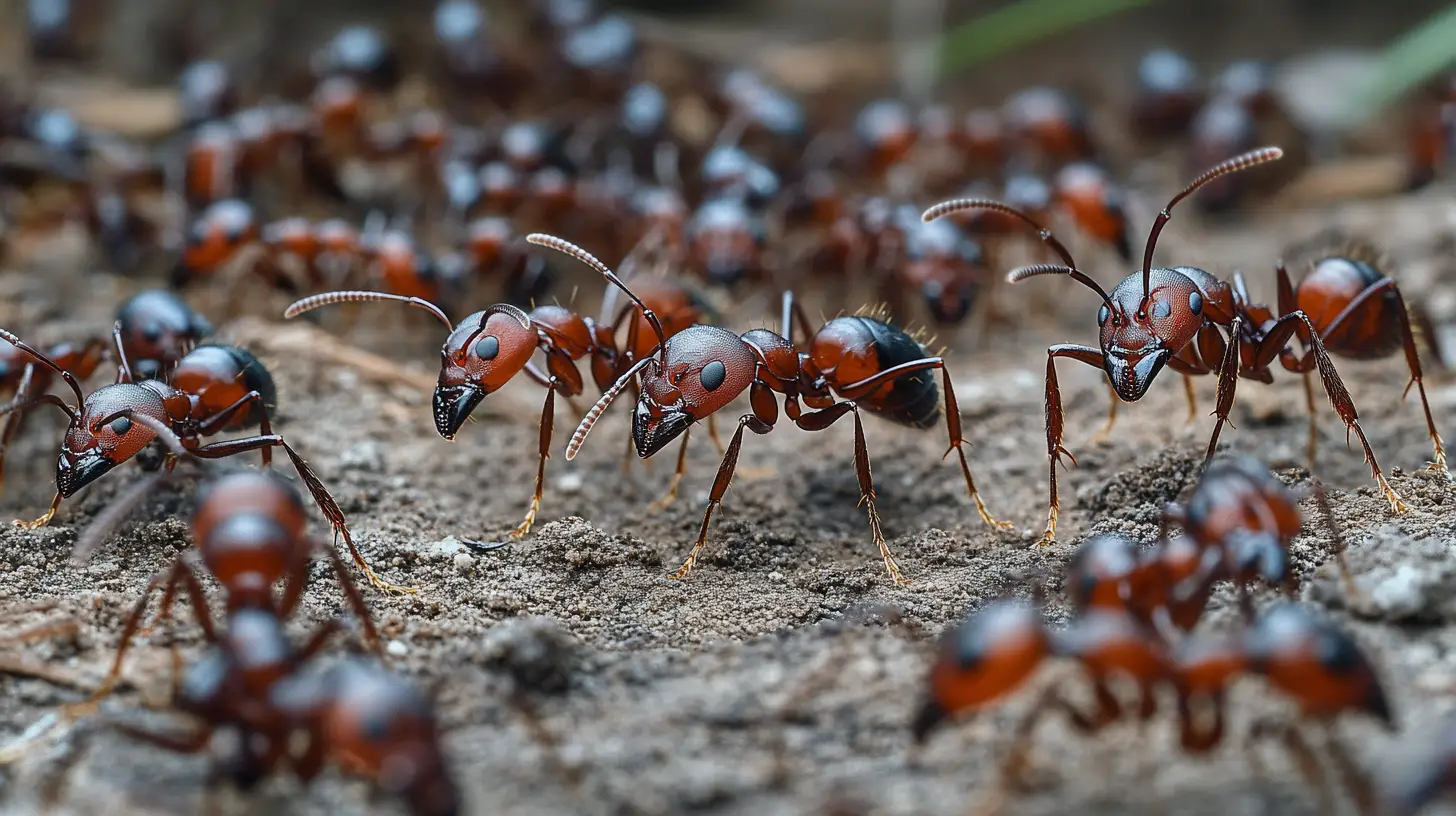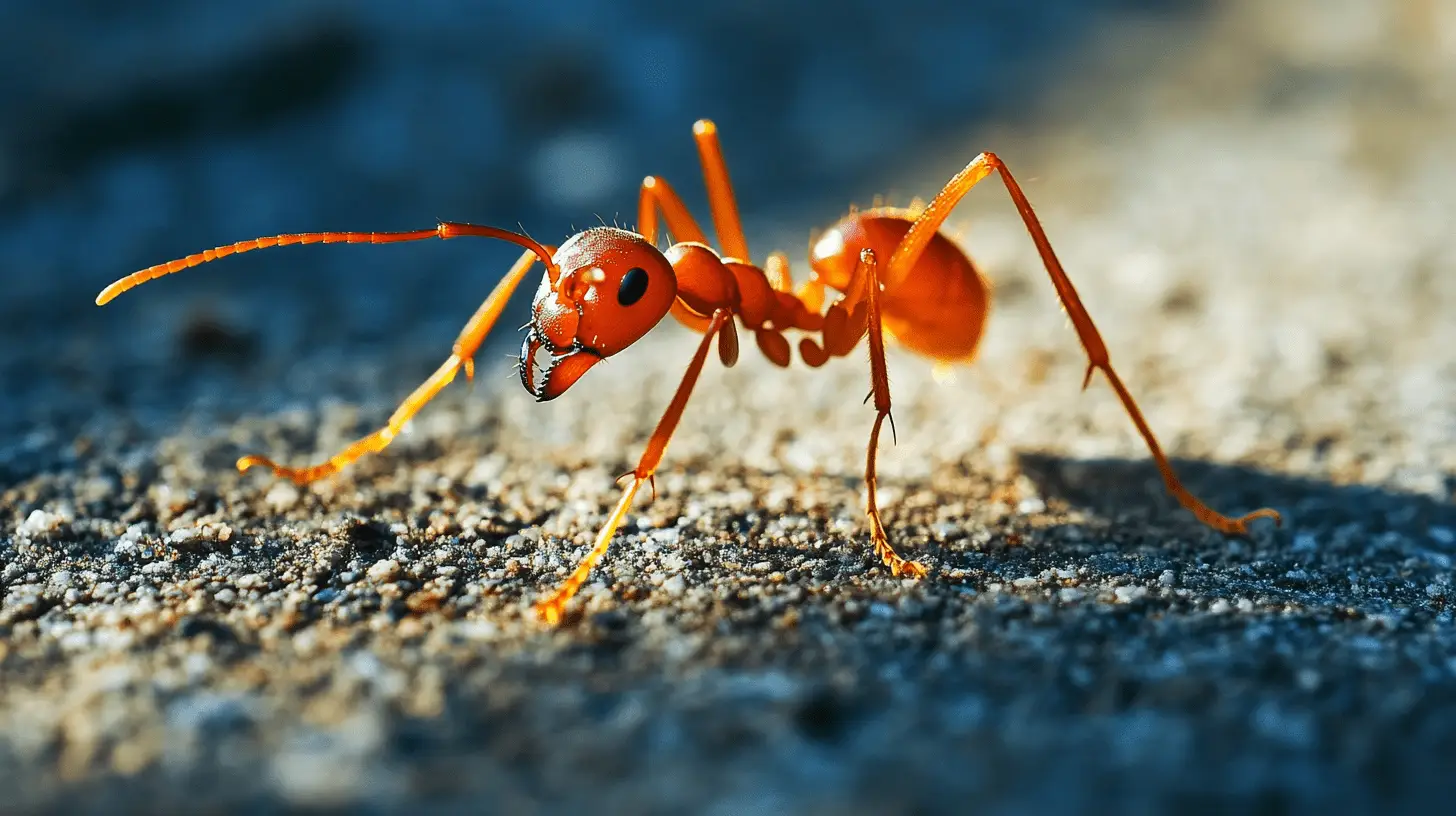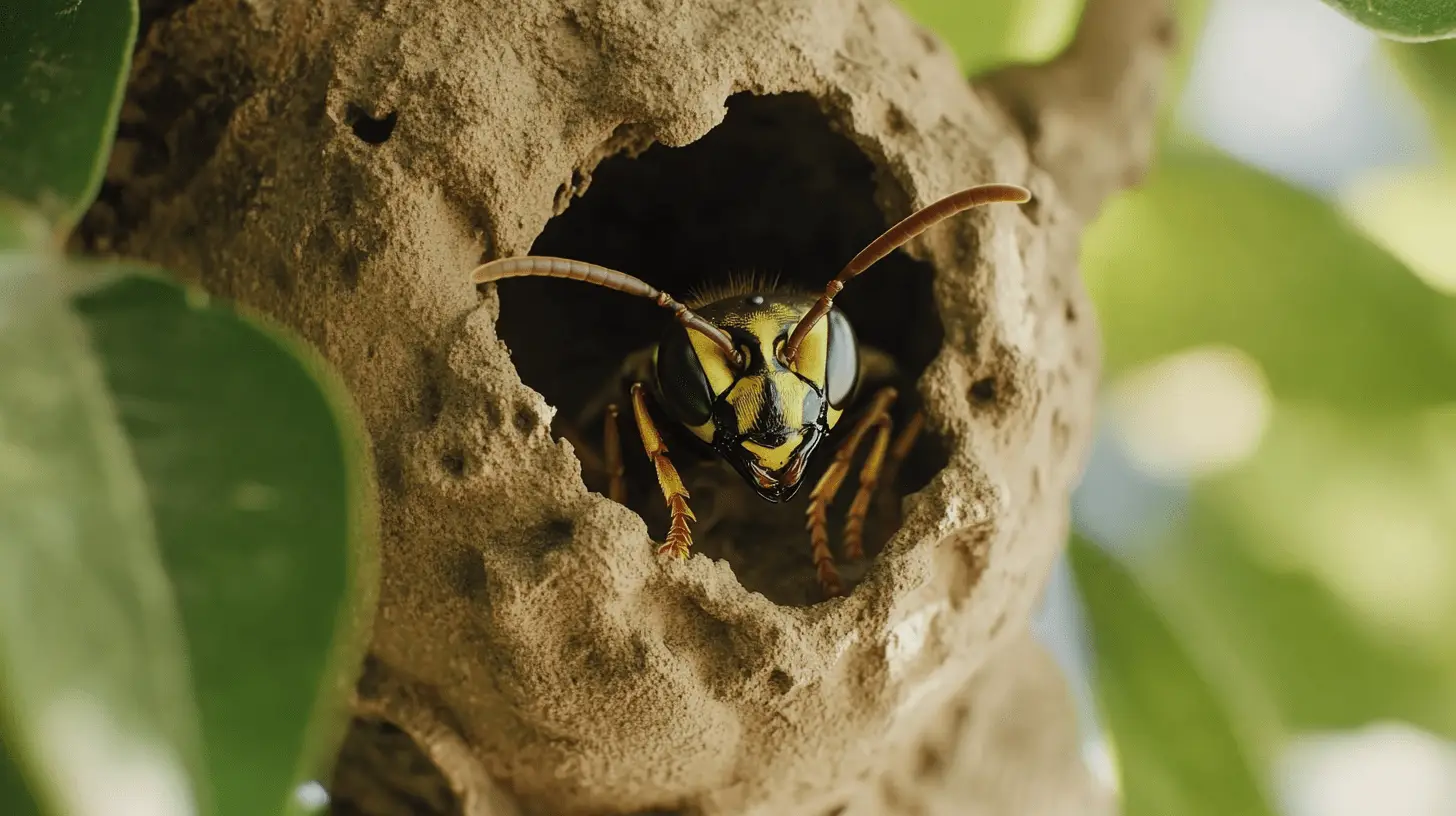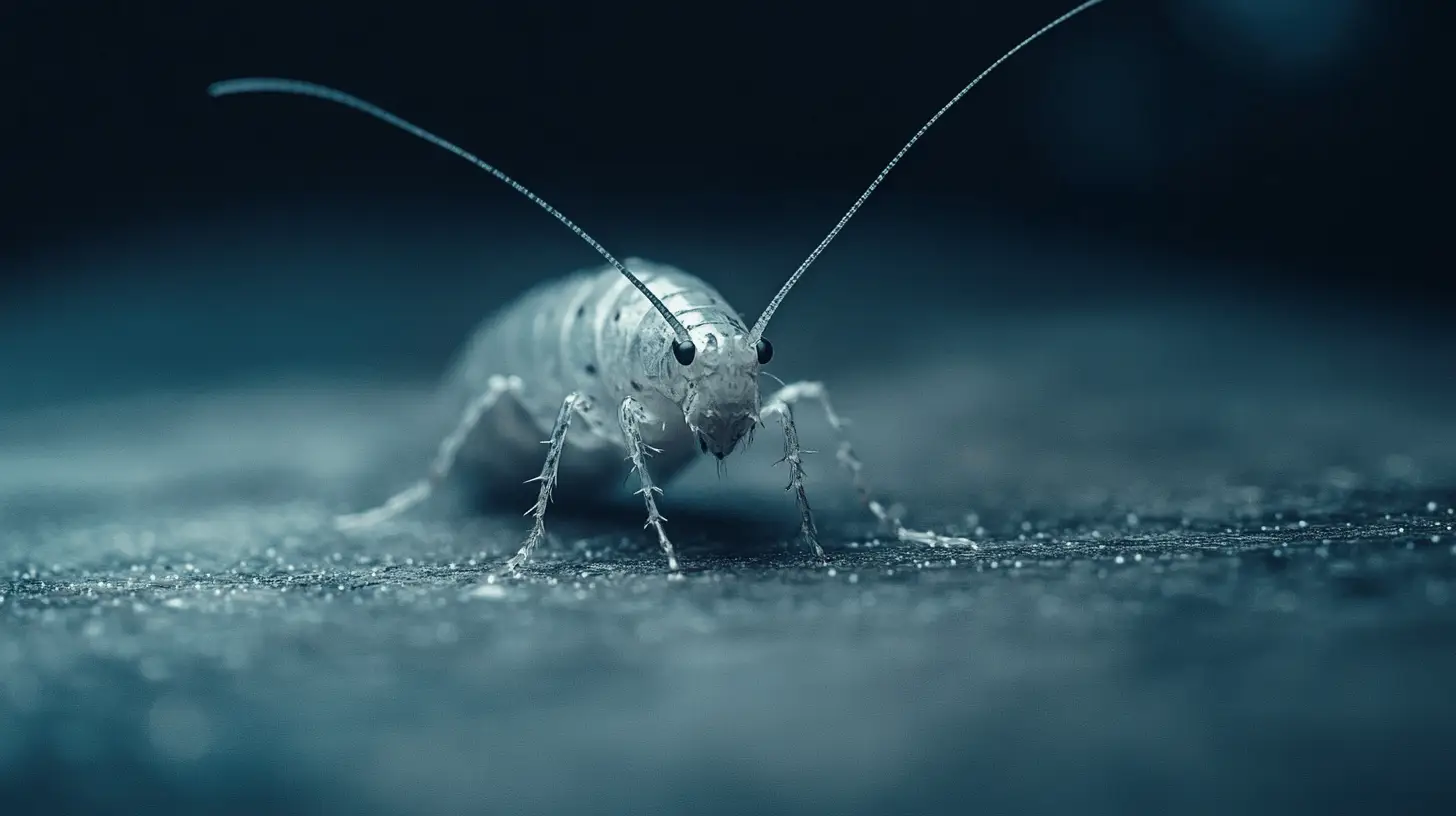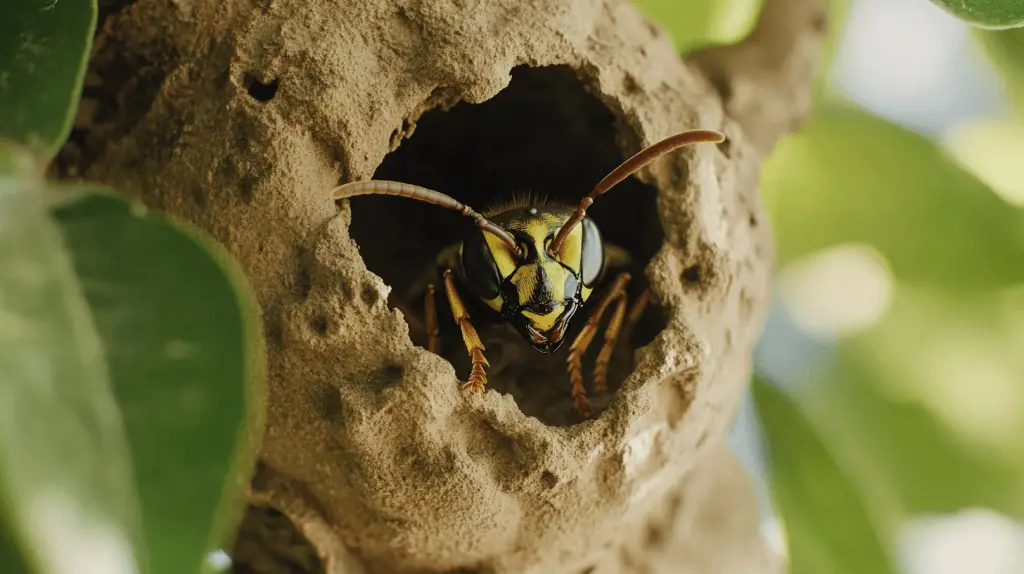
Table of Contents
Ever spotted a strange, mud-built structure in your Palmetto yard and wondered what it was? Chances are, you’ve encountered a mud dauber’s nest. These solitary wasps are fascinating yet often misunderstood creatures that can be found across the United States during the spring and summer months.
Mud daubers, including organ pipe, black-and-yellow, and blue varieties, are unique in their nesting habits. Unlike their more aggressive, colony-dwelling relatives, mud daubers prefer a solitary life, constructing intricate nests out of mud. This article will guide you through understanding their habits, how they build their homes, and ways to manage any unwanted mud dauber infestations in your outdoor spaces.
Key Takeaways
- Identifying Mud Daubers: Mud daubers are solitary wasps known for their distinctive thread-like waist and mud-built nests resembling organ pipes, commonly found in shaded areas like eaves and garage ceilings.
- Behavior and Habitats: Unlike aggressive social wasps, mud daubers are generally non-aggressive and play a significant role in controlling spider populations by paralyzing and storing them in their nests for their larvae to consume.
- Life Cycle Stages: Mud daubers undergo four stages in their life cycle: egg, larval, pupal, and adult. Each stage has distinct behaviors, with larvae feeding on paralyzed spiders stocked in the nest cells.
- Ecological Role: Mud daubers are beneficial insects, helping to control spider populations and contributing to pollination by feeding on nectar, thereby aiding in maintaining a balanced ecosystem.
- Managing Mud Dauber Infestations: Effective management includes regular inspection of shaded areas, sealing entry points, safely removing nests with protective gear, and employing deterrents to prevent re-nesting.
- Safety Considerations: Despite their low aggression, it’s essential to take preventive and safety measures when managing mud dauber nests to avoid potential nuisances or hazards, such as blocked equipment in machinery.
Understanding Mud Daubers
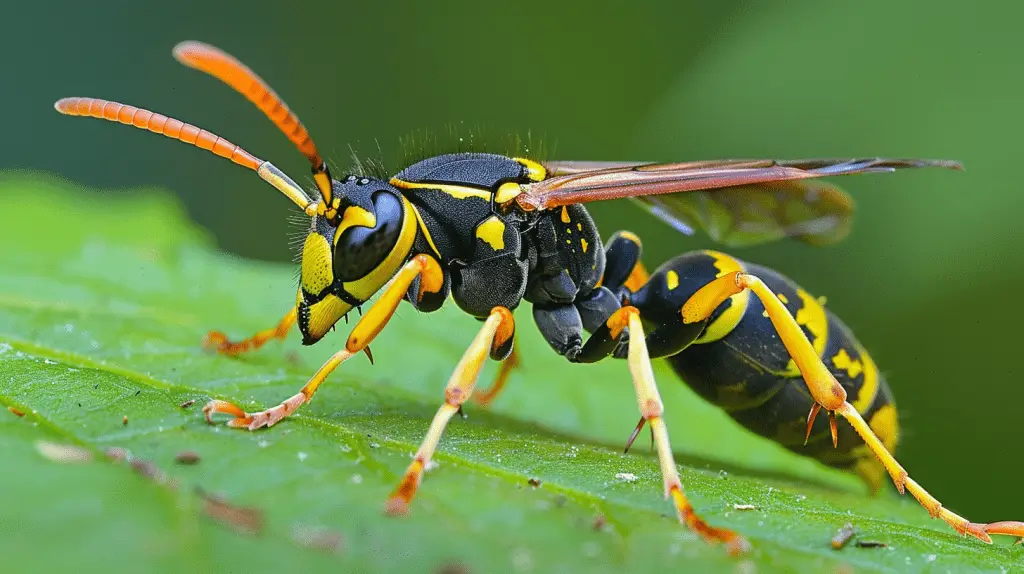
Mud daubers are solitary wasps that construct mud nests and play a role in controlling spider populations. They are generally non-aggressive and only sting if their nest is directly threatened.
Identification and Description
Mud daubers are easily identifiable by their distinctive physical characteristics. They have a thread-like waist separating their abdomen and thorax. Most mud daubers display yellow and black markings, though some varieties appear metallic and dark-bodied. These wasps build cylindrical nests resembling organ pipes, made from short, parallel mud tubes. You’ll often find these nests in shaded areas like porch ceilings, barns, and sheds.
Behavior and Habitat
Mud daubers exhibit solitary behavior, unlike other wasps that defend their nests aggressively. Mud daubers provide a beneficial service by paralyzing and storing spiders in their nests for their larvae to consume. They typically build nests under overhangs or eaves of buildings. Specific species, such as Sceliphron caementarium and Chalybion californicum, are common in these settings.
Mud daubers are particularly attracted to shaded, humid areas where they can easily access mud for nest-building. Even though their stinging ability, they are rarely aggressive, only becoming defensive if their nest faces a direct threat.
- Inspection: Regularly check shaded areas around your home for mud dauber nests.
- Safety Gear: Wear gloves and a long-sleeved shirt when removing nests.
- Removal: Use a long tool to dislodge the nest from a safe distance.
- Deterrents: Keep potential nesting areas dry and consider using insect repellents.
Through understanding mud daubers’ behaviors and habitats, you can safely manage these beneficial insects while minimizing any potential nuisances they may cause.
The Life Cycle of Mud Daubers
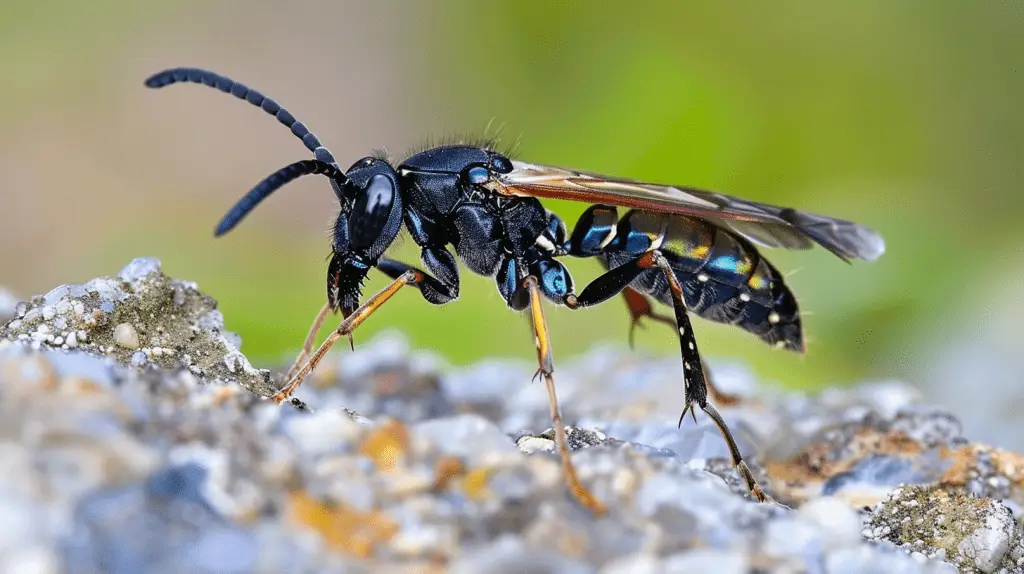
Understanding the life cycle of mud daubers can enhance your ability to manage and appreciate these fascinating insects. Their life cycle comprises four stages, each with distinct behaviors and characteristics.
Stages of Development
- Egg Stage: Female mud daubers lay eggs in their nests’ cells, which are provisioned with paralyzed spiders. This stage is crucial for ensuring larval food availability.
- Larval Stage: The eggs hatch shortly after being laid, and the larvae begin feeding on the stored spiders. The larvae consume these spiders until fully developed. Interestingly, mud dauber larvae have a closed digestive system and can’t excrete waste until they finish their food. After completing their meal, they develop an anus, excrete a waste sac, and effectively manage the waste by sealing off part of the cell.
- Pupal Stage: Once the larvae are fully grown, they create pupae, protective cases in which they undergo metamorphosis. This stage safeguards them until they emerge as adults.
- Adult Stage: Upon emerging from the pupal case, adult mud daubers leave the nest to begin their solitary lives. They forage, build new nests, and continue the cycle by laying eggs.
Nesting Behavior
Mud daubers are known for their unique nesting habits. They construct small nests from mud, typically under overhangs like building eaves. The pipe organ mud dauber (Trypoxylon politum) builds nests resembling church organ pipes, while the black and yellow mud dauber (Sceliphron caementarium) forms globular nests.
These nests contain multiple cells, each provisioned with paralyzed spiders to feed the developing larvae. For instance, the iridescent blue mud dauber (Chalybion californicum) often takes over nests of the black and yellow mud dauber, provisioning them with black widow spiders.
Even though their capacity to sting, mud daubers are rarely aggressive and are generally considered a nuisance only when their nests are built in human structures like garages or under eaves.
Properly understanding the life cycle and nesting behavior of mud daubers can help you manage their presence effectively, thereby minimizing potential nuisances while appreciating their role in controlling spider populations.
Significance of Mud Daubers
Mud dauber wasps play a crucial ecological role and impact human activities in distinct ways. Their contributions are evident in various aspects of their behavior and interactions with the environment.
Ecological Roles
Mud daubers are significant predators of spiders. They capture and paralyze spiders to provision their nests, ensuring their larvae have a consistent food source. This predation keeps spider populations in check, promoting a balanced ecosystem. Several species of mud daubers, such as the black and yellow mud dauber and the iridescent blue mud dauber, specifically target spiders like black widows, contributing to overall environmental health.
Also, adult mud daubers feed on nectar, aiding in pollination. While not primary pollinators like bees, their activity helps in transferring pollen between flowers, supporting plant reproduction and biodiversity.
Impact on Human Activities
Mud daubers often build their nests in sheltered areas around human structures, including eaves, garages, and attics. These nests, though unsightly, are generally harmless. You can safely remove them when inactive to maintain the aesthetic of your surroundings.
But, there are occasional downsides. For instance, these nests can sometimes cause unexpected issues, such as in the case of Birgenair Flight 301 in 1996. Investigations suggested that a blocked pitot tube, potentially caused by a mud dauber nest, contributed to the crash, highlighting the importance of regular maintenance and inspection of aircraft equipment.
Even though these minor inconveniences, mud daubers’ role in controlling spider populations and aiding pollination underscores their ecological importance. By appreciating their contributions, you can better manage their presence while supporting a healthy ecosystem.
Managing Mud Dauber Presence
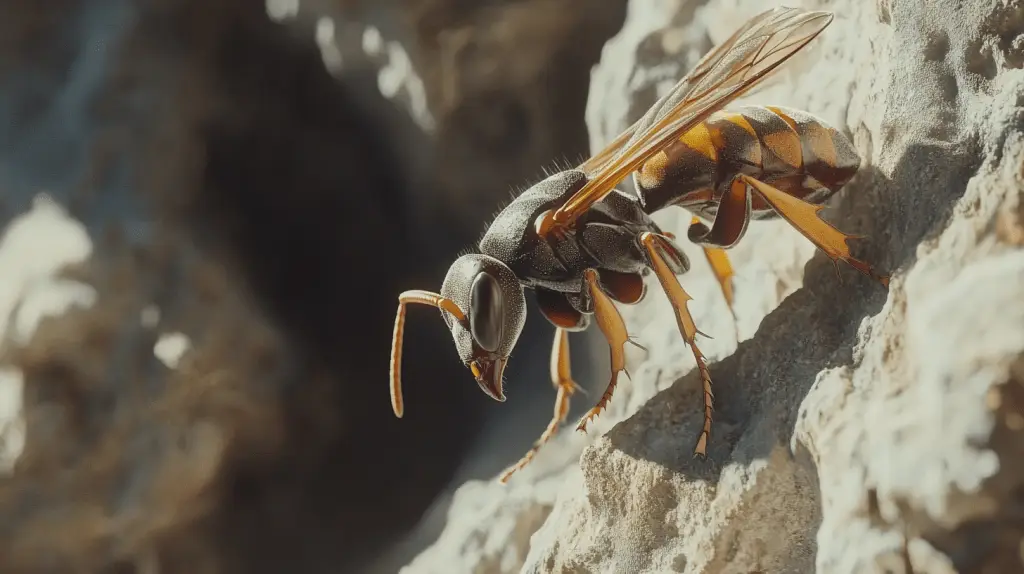
Mud daubers, known for their distinctive mud nests and spider control, can sometimes become a nuisance around homes and structures. Managing their presence involves understanding identification, safety measures, and removal methods.
Safety and Prevention
To manage mud dauber presence safely, focus on prevention strategies. Identify mud dauber nests by looking for tube-like structures made of mud in sheltered areas like porches, eaves, and walls. Maintain and inspect these locations regularly to spot early signs of nest-building.
Seal entry points such as cracks and small openings in walls and eaves to deter mud daubers from nesting. Install screens over vents and large openings to provide an additional barrier. Regularly clean potential nesting sites to remove debris and existing nests.
Regular maintenance could prevent severe incidents, as seen in the 1996 Birgenair Flight 301 crash, where a blocked pitot tube, likely caused by a mud dauber nest, led to a catastrophe. Inspections and preventive measures can mitigate such risks.
Methods of Removal and Control
If mud daubers have already built nests, follow safe removal practices. Wear protective clothing to avoid stings, although mud daubers are typically non-aggressive. Spray water on the nests to soften the mud, making it easier to remove.
Clearly, remove nests with a scraping tool once the mud is softened. Dispose of the nest material far from the property to avoid re-infestation. If nests are in hard-to-reach areas or if you have an allergy, consider hiring professional pest control services like Palmetto Pest Control.
Follow up the removal with eco-friendly insecticides or natural deterrents like citrus oil near previous nest sites to prevent re-nesting. Regular monitoring and maintenance ensure that mud daubers do not return, maintaining a balance between their ecological benefits and the safety of your home and surroundings.
Understanding mud daubers and their habits helps you manage their presence effectively. While they play a crucial role in controlling spider populations, their nests around your home can be concerning. By identifying these solitary wasps and taking preventive measures, you can maintain a safe environment. Regular inspections and proper sealing of entry points are key to preventing nests. If removal is necessary, ensure you’re equipped with the right tools and protective gear. Balancing ecological benefits with safety measures ensures a harmonious coexistence with these fascinating insects.
Frequently Asked Questions (FAQs)
How fast can a mud dauber build a nest?
The whole nest-building process can take from 3 hours to 2 to 3 days. It usually ends when the wasp runs out of spiders or energy. During this nest-building process, the female does all the work while the male guards the nest to ensure no parasites enter the cells before they are sealed.
How do you keep mud dauber wasps away?
Preventing access to secluded, shady areas of your home’s exterior can help deter mud daubers. Regular cleaning or power-washing of your home’s exterior also reduces the number of nests you’ll encounter.
Is a mud dauber nest full of spiders?
Each cell in a mud dauber nest houses a single egg and up to twenty-five live, paralyzed spiders for the larva to consume. While nests can be a nuisance, mud dauber stings are rare and not of medical importance to humans.
What’s the difference between a mud dauber and a wasp?
Mud daubers are typically larger than other wasps, mainly due to their longer wingspan. Additionally, mud daubers usually have more pronounced white stripes on their abdomens compared to other wasps.
What lives in a mud dauber nest?
Mud dauber nests consist of short mud tubes constructed side by side, often located in shaded areas like porch ceilings, under eaves, or in sheds and barns. The female paralyzes spiders with her sting and places them inside mud chambers for her larvae to consume.

